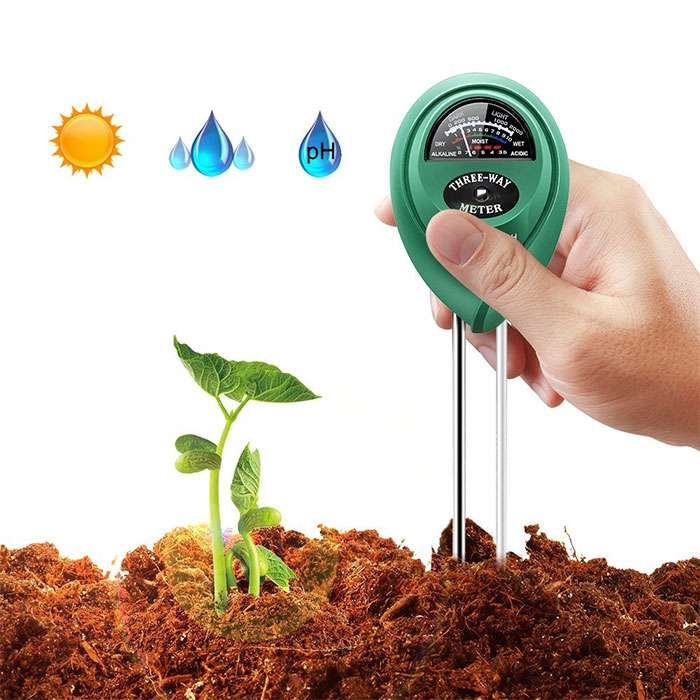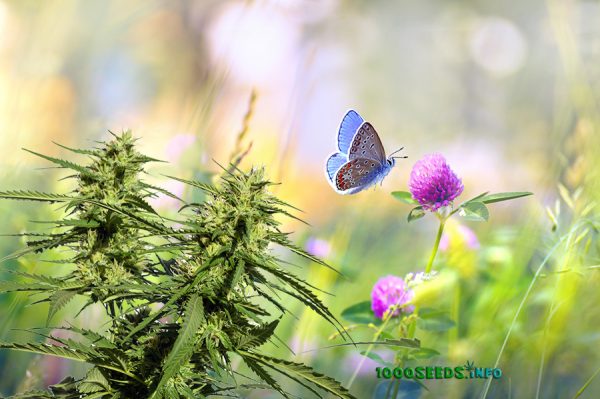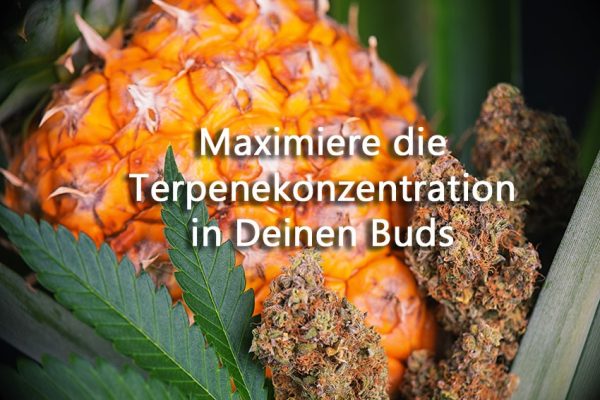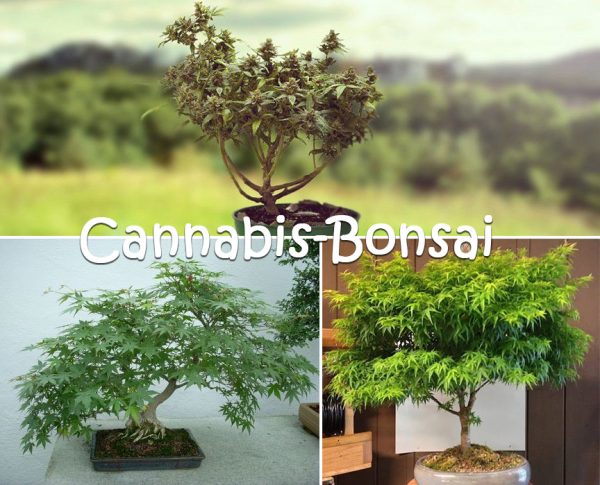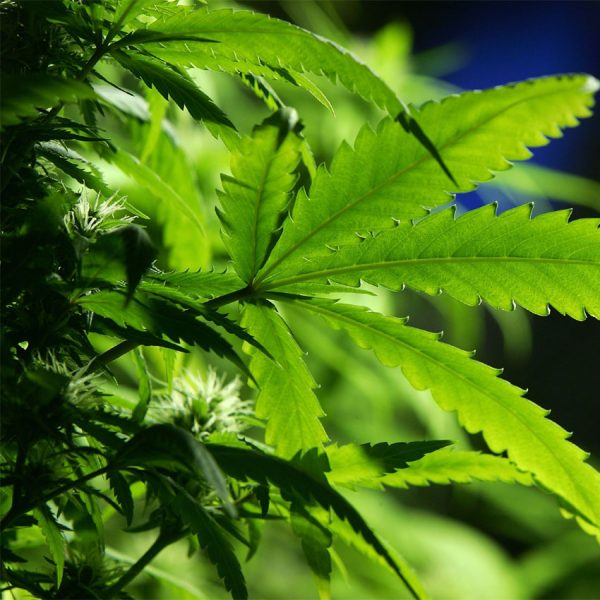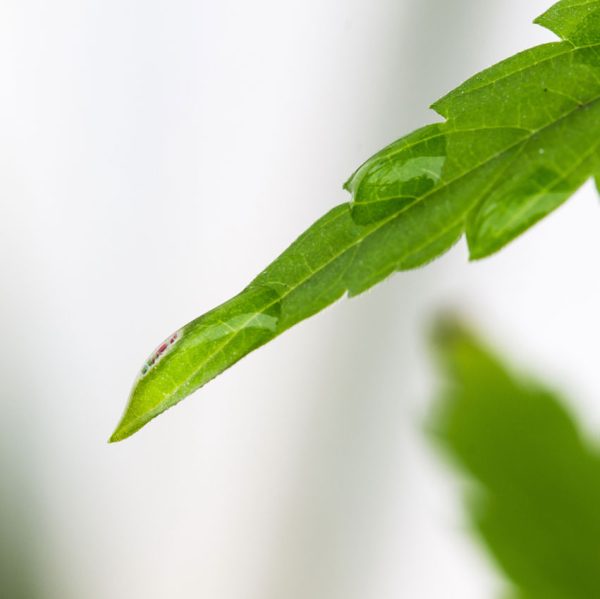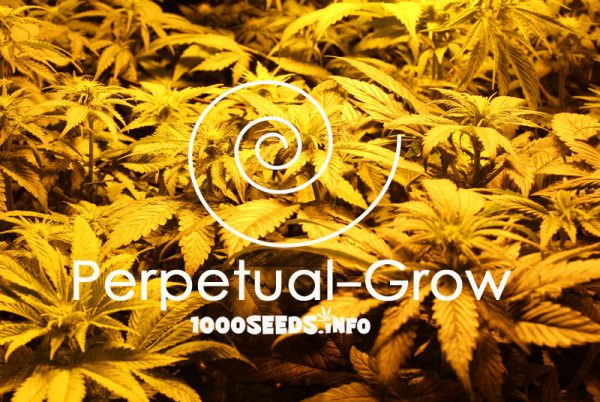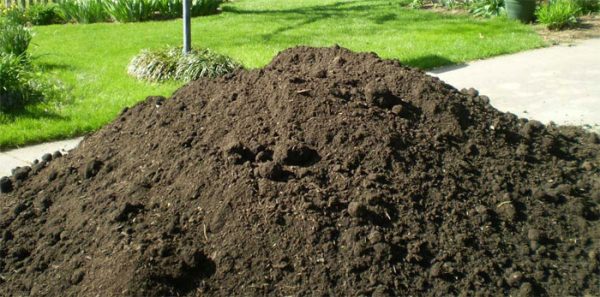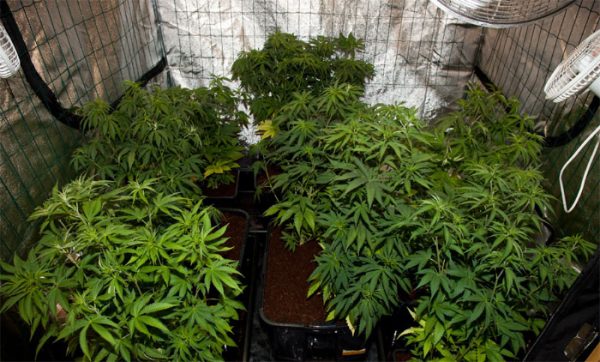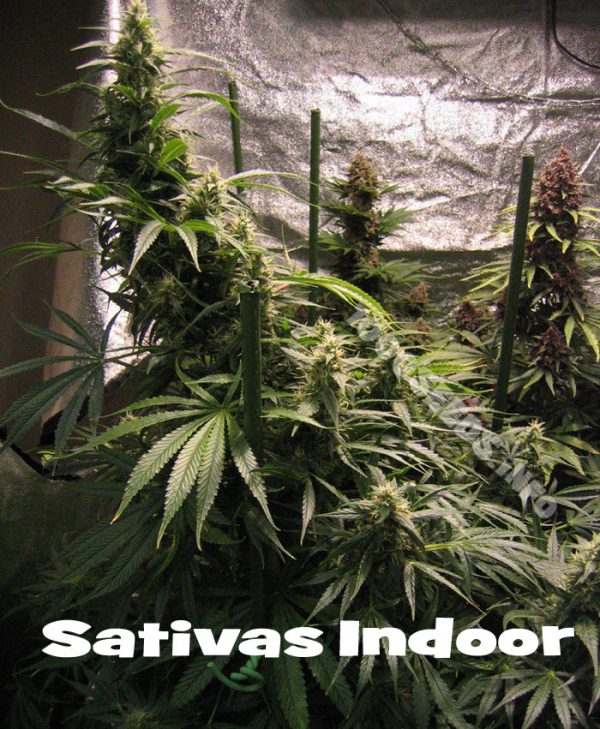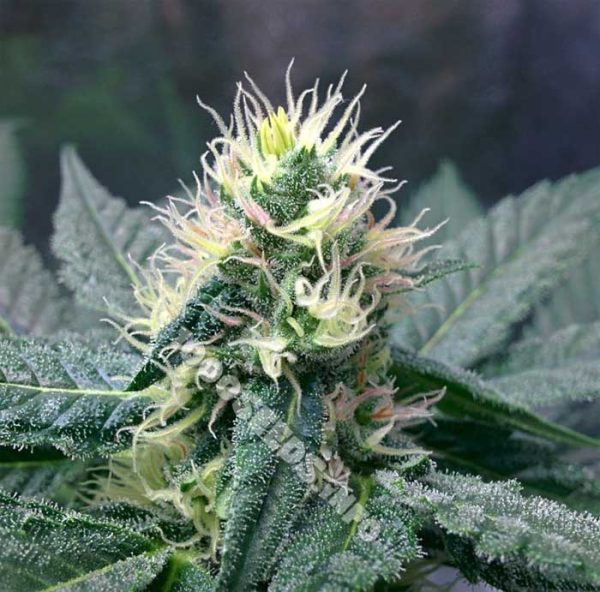Control the pH value and combat nutrient deficiencies
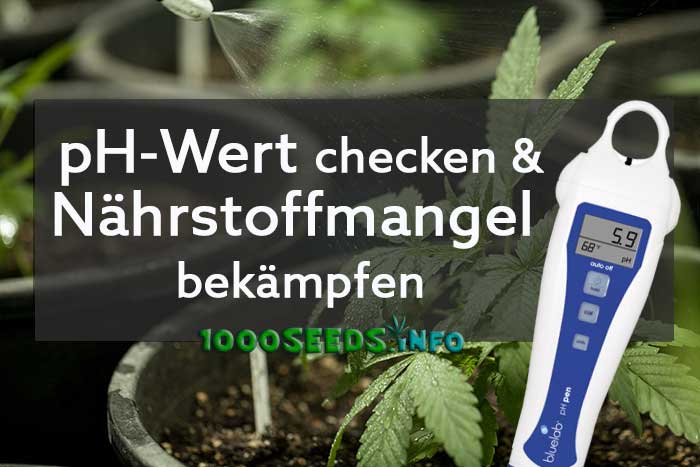
Adjusting the pH is not difficult, it only takes a few minutes and your cannabis plants will thank you for it. The pH value is the measure of how acidic or alkaline something is. The scale ranges from 1-14. A pH of 7 is considered neutral. For example, pure water has a pH of 7. In cannabis cultivation, you can determine the pH with special drop tests or digital pH meters.
Why is measuring the pH value so important?
Cannabis prefers a slightly acidic environment around the roots. Only the right pH value at the roots allows the plants to get sufficient access to nutrients. If the pH value in the root area is too high or too low, the cannabis plant cannot absorb nutrients as intended and as a result, deficiency symptoms occur.
Some lucky growers successfully grow cannabis without ever checking the pH. They are just very lucky and not only use an already pH-optimised soil but have the added advantage that their water has exactly the right pH. In this case, adjusting the pH tends to take a back seat. However, the vast majority of cannabis growers need to do some control and adjustment to get really optimal harvest results.
In many cases, the pH of the tap water is too high or too low for ideal cannabis cultivation. The majority of growers do themselves and their plants a huge favour by adjusting the pH.
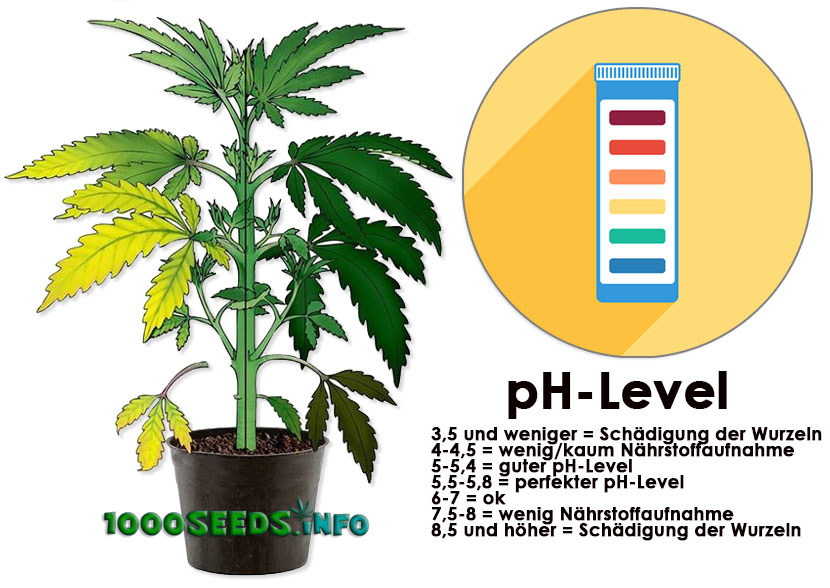
Adjusting the pH value has advantages:
- Cannabis plants get fewer problems with nutrient deficiencies and can therefore grow faster and produce larger yields.
- Problems related to an incorrect pH value can be prevented in advance. A nutrient deficiency does not occur in the first place, from which the plants will either never fully recover or recover only slowly.
In a chemical sense, nutrients have a different shape depending on the pH around them. Some nutrients can be absorbed more easily than others. If the pH is too high or too low, the cannabis plant may show signs of deficiency, even though certain nutrients would actually be present in the root zone. The right pH value ensures that cannabis plants have constant access to all the necessary nutrients. In addition to the correct pH value, it is enormously important to use fertilisers and fertiliser systems that are specially adapted for cannabis plants. These fertilisers are formulated so that they can be absorbed particularly well and quickly by cannabis plants.
The right pH value
- Earth: 6.0-7.0 pH
- Hydroponics/Coco/Earth: 5.5-6.5 pH
Once you get used to adjusting the pH, it only takes a few seconds and you don't worry about it much. When growing on soil and without the use of liquid fertilisers, pH becomes less of a problem and does not need so much attention. As soon as you use liquid fertilisers, pH management is a prerequisite to avoid problems during growth and to get the best yields.

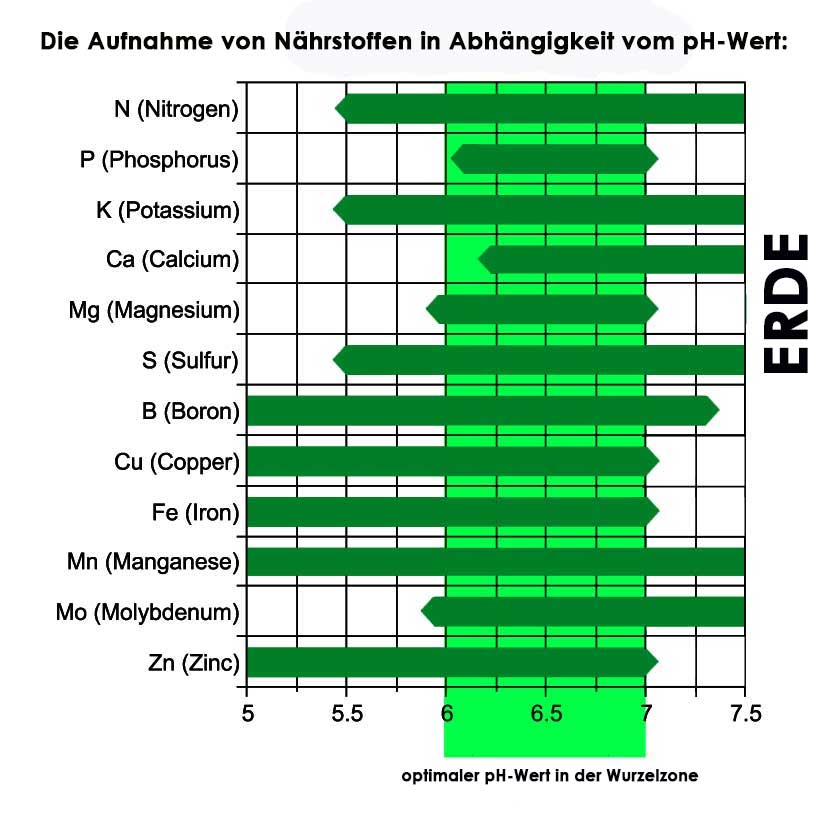
When growing hydroponically, it is advisable to allow the pH to fluctuate slightly within 6-7 pH. As you can see in the illustration, some nutrients can only be absorbed in the lower or only in the upper range of the optimal range. So just not being quite so precise is often enough.
If you grow hydroponically, you cannot avoid measuring and adjusting the pH. Here it is a crucial prerequisite so that the plants can develop as desired.
If you discover an incorrect pH value in the root zone, action should be taken immediately. It is not good to wait until bigger problems develop and a deficiency shows on the leaves. Of course you can just carry on, but you will only get the best results if the pH is right. As long as your plants are strong, bright green and lush in their grow tent, you don't need to worry. Don't solve a grow problem that doesn't exist!
With the Rapitest can be used to quickly and easily measure the pH value in the soil. It also measures the moisture in the soil and the light.
Important tips:
- Check the pH value regularly and often, so you can recognise possible changes early and react immediately.
- First add all fertilisers and additives to the nutrient solution, as these can also change the pH value by themselves. Then measure and adjust the pH value.
What do I need to adjust the pH value?
- pH measuring kit with drops e.g. from GHE or Essentials
- digital pH meter e.g. the Bluelab pH Pen or the pH meter ADWA-100
- pH-Down and pH-Up for adjustment (e.g. pH-Down or pH-Up of Essentials or GHE). With a bottle of pH-Up or pH-Down, you can easily and effortlessly adjust the pH value. These additives have the advantage over household alternatives such as vinegar or soda that they keep the pH value more stable.
- Possibly fertiliser
To mix the nutrient solution and adjust the pH, I always put everything in a clean container, bucket or large plastic watering can.
To adjust the pH value
Add all additives and nutrients to the irrigation water.
Stir everything. 3.
Measure the pH with a pH meter or pH test kit.
4. if the pH is too low, add pH-Up, if the pH is too high, add pH-Down to bring the pH to the desired level.
5. test again after a while, sometimes the pH-value can change again a little.
Water the plants with the pH-adjusted nutrient solution or add it to the nutrient tank of your hydroponic system.
For plants that are watered by hand, it makes sense to measure the water coming out of the drainage holes of the plant pots every now and then to see if the pH value is also correct here. Hydroponic growers take a small sample from the nutrient tank to test the pH.
How much pH-Down or pH-Up do I need?
The amount of pH-up or pH-down you need depends very much on the water you use. If the water is hard (contains a lot of lime or mineral salts), more is needed accordingly. Start adding the pH-regulating additive to the nutrient solution drop by drop at first and rather approach the optimal value in small steps, adding a few drops the first time, measuring, adding a few drops again if still not enough, measuring etc. Keep in mind that these pH-regulating additives are very concentrated and you can very quickly have too much of them. Then it will be difficult to optimise the water again in the other direction and you may have to start all over again. But you don't always have to do it in such small steps. Note how many drops or ml of pH-Up or pH-Down you have added. Normally you can then use this amount in the future and you will notice after measuring that it is correct. If there are slight fluctuations, you can compensate for them quickly and easily. With time, you get practice and have a good feeling for it.
The amount of pH-regulating agents also depends on which fertiliser is currently being used. It is not possible to give an exact value, because the pH value depends on many factors, such as the origin of the water, the planting medium, the added nutrients, the drainage and the whole setup. At the beginning, you find out the right amount of pH-regulating additives by trial and error.
PH-Down is much more potent and effective than pH-Up. That's why you should use pH-Down more carefully and only in small amounts at the beginning. Once you have determined the right amount to add, everything becomes easier.
Cannabis nutrients and ph regulation
The golden rule for liquid fertilisers is: Better a little too little than a little too much!
Nutrients should always be poured directly into the irrigation water one at a time and stirred. Do not mix all the nutrients together first and then add them to the water. This is bad and can lead to the individual fertilisers reacting with each other and therefore no longer being absorbed properly by the plants.
If you use a 3-component fertiliser consisting of Micro, Grow and Bloom, you should always add the Micro part first. If you use pure water, it reacts very strongly to any addition of pH-down or pH-up.
Shaking the nutrient tank or the watering can can change the pH value for some time. Therefore, only shake and the like when the pH value has been adjusted. Before that, you should only stir carefully to mix in the fertiliser components or pH-regulating additives.
The pH value can sometimes drift in a certain direction for a short time, but this is no cause for concern as long as the pH value is generally in the right range.
The ph-value of soil
The next time you water, measure the pH of the water you pour into the top of the pot and then test the water that flows out of the drainage holes at the bottom of the pot. If the pH of the water flowing out is in the right range, it is good, even if this value does not match the pH of the watering water. If the pH value is too high or too low, it must be adjusted.
When growers are already using high quality cannabis fertiliser and applying it correctly, the most common reason why plants still experience nutrient deficiencies is that the pH level at the roots is not correct. Adjusting the pH is a measure that helps to make the cannabis plants healthier and accelerate their growth.
PH problems can also sometimes be triggered when too much fertiliser has been given and fertiliser salts have accumulated in the planting medium. If this is the case, you can flush the planting medium (water with clear, pH-adjusted water, 2-3 times as much as the plant's container) to remove excess salts. After this flushing, plants should be watered with a light nutrient solution. After flushing, plants often show signs of overwatering and appear somewhat limp. This is normal and will go away after some time when the medium has become drier again.
Watering water for plants on soil should have a pH value of 6-7. The water running out of the drainage holes should have a pH value between 6-7. In this case everything is ok. If the pH is less than 6, the next watering water should be made with a pH of 7. If the pH is above 7, then water the next time with water that has a pH of 6. Continue this until the pH value has regulated.
Earthless media (e.g. Coco)
The irrigation water for soilless media should have a pH of 5.5-6.5. If it is less than 5.5, mix a nutrient solution with a pH of 6.5 the next time. If the pH is more than 6.5, mix the next nutrient solution with a pH of 5.5. Continue this until the pH has regulated.
PH value in hydroponics - you can't do without measuring it
Especially in hydroponic cultivation, measuring and regulating the pH value is essential. This should also always be done in connection with changing the nutrient solution. If the pH value is too high, add a very small amount of pH-Down to the nutrient tank and check the nutrient solution again a few minutes later.
If the pH is too low, add a small amount of pH-Up to the nutrient tank and check the nutrient solution again a few minutes later.
Tips for hydroponic cultivation
- When the nutrient tank is shaken, the pH value of the water tends to increase. This is normal.
- The pH value of the nutrient solution also changes with the nutrient consumption of the plants.
- Test the pH value of the nutrient solution in the nutrient tank regularly. This way you can recognise and regulate problems with the pH value in time.
Digital pH meter or pH test kit?
pH test kit
The cheapest way to determine the pH value is to use a pH test kit that works with a colour scale and a special liquid. This involves taking a small sample of water and adding 1-2 drops of the liquid as appropriate. The water changes colour. With the help of a colour scale, one can read the pH value.
Advantages and disadvantages:
- They are cheap
- Not as accurate as digital pH meters
- Some people do not like colour scales or find it difficult to recognise individual colours
- It can be easier to get confused if the colour is not recognised correctly
- More difficult to use with fertilisers that colour the water.

Digital pH meter
- Delivers an exact measurement result
- works very simply and quickly
- is more sensitive and can be damaged more easily
- must be properly cared for and stored, always needs cleaning fluid in the cap, otherwise it will no longer work.
- Must be calibrated with each grow cycle
- Slightly higher costs than pH drop test, special liquids are needed for calibration
Special water:
If you use water from the reverse osmosis system for your hydroponic grow, you should give your plants additional Cal-Mag or similar. Tap water usually already contains magnesium and calcium naturally. Watering with pure water can therefore lead to a lack of these nutrients because it does not contain any minerals itself.
Rainwater is similarly good as drinking water and can be used for cannabis plants. Only some rainwater in certain regions should rather not be used (-> environmental pollution). If you live in a big city, rainwater is probably not as pure as one would like it to be.
Alternatives to pH control and regulation?
Growers who grow organically and use soil with compost are least likely to have problems with pH. The natural process of decomposition helps to make nutrients more available to the roots. Cannabis needs very specific nutrients to achieve the best results. If you want to grow without worrying about pH, you should use an organic soil with compost. You can make your own organic soil mix that is valuable and suitable for cannabis plants (Here is a recipe) or you can use a ready-made, already enriched soil such as the Heavy Mix from Top Cropwhich already contains all the important organic nutrients and components. The plants can feed themselves with this throughout their entire cycle without the need for additional fertiliser. Only in the case of large plants that have a very long life span can a top dressing with organic additives then become necessary (after more than 5 months).
Checking and adjusting the pH value is very helpful in any case and allows you to get the most out of the fertilisers.
If you are using a high quality cannabis fertiliser as directed, and you are still showing signs of deficiency, you should always think about the pH level first.






